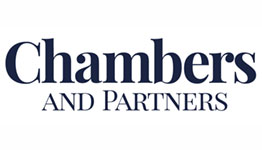published 09/30/2020
It has been almost 5 years since the Truth and Reconciliation Commission of Canada (TRC), led by former Justice and now Manitoba Senator Murray Sinclair, issued its report documenting the experiences of about 150,000 students who had attended Canada’s residential school system for indigenous children. Along with the report, the TRC provided its “Calls to Action”, a series of steps to be taken by various participants in Canadian government and society in an effort to help achieve reconciliation with Canada’s Indigenous Peoples in respect of the many painful episodes in their more recent history.
If the calls to action are directed toward government, and some to all levels of government, including municipalities. Those calls to action that are directed toward municipal governments are summarized below. The numbering follows the numbering in the list of calls to action.
40. To create, in collaboration with Aboriginal people, adequately funded and accessible Aboriginal-specific victim programs and services with appropriate evaluation mechanisms.
43. To fully adopt and implement the United Nations Declaration on the Rights of Indigenous Peoples as the framework for reconciliation.
57. To provide education to public servants on the history of Aboriginal peoples, including the history and legacy of residential schools, the United Nations Declaration on the Rights of Indigenous Peoples, Treaties and Aboriginal rights, Indigenous law, and Aboriginal–Crown relations. This will require skills based training in intercultural competency, conflict resolution, human rights, and anti-racism
75. To develop and implement, with the federal government and others, strategies and procedures for the ongoing identification, documentation, maintenance, commemoration, and protection of residential school cemeteries or other sites at which residential school children were buried. This is to include the provision of appropriate memorial ceremonies and commemorative markers to honour the deceased children.
76. To adopt strategies of documenting, maintaining, commemorating, and protecting residential school cemeteries in accordance with the following principles.
- The Aboriginal community most affected shall lead the development of such strategies.
- Information shall be sought from residential school Survivors and other Knowledge Keepers in the development of such strategies.
- Aboriginal protocols shall be respected before any potentially invasive technical inspection and investigation of a cemetery site.
77. To work collaboratively with the National Centre for Truth and Reconciliation to identify and collect copies of all records relevant to the history and legacy of the residential school system, and to provide these to the National Centre for Truth and Reconciliation.
87. To provide, in collaboration with Aboriginal peoples, sports halls of fame, and other relevant organizations, public education that tells the national story of Aboriginal athletes in history.
88. To take action to ensure long-term Aboriginal athlete development and growth, and continued support for the North American Indigenous Games, including funding to host the games and for provincial and territorial team preparation and travel.
Not every call to action necessarily applies to every municipality. For instance, not every municipality will have been the site of a former residential school or school cemetery, or maintains records in that regard.
There are several calls to action, however, that are universal. There is nothing to prevent all municipalities from ensuring that their employees receive culturally appropriate training in relation to the history of Aboriginal Peoples in Canada. There are many organizations that offer this training in a wide variety of platforms.
Some of the calls to action are not without some controversy (or at least debate as to their application). For instance, the United Nations Declaration on the Rights of Aboriginal Peoples (often referred to by the acronym “UNDRIP”) includes a right of free, prior and informed consent on the part of affected Aboriginal Peoples in circumstances where development may have an impact on their indigenous rights or territory. How that will square with Canada’s current legal framework of consultation with Indigenous Peoples in circumstances where aboriginal or treaty rights might be affected by government decisions remains to be determined.
Many municipalities have adopted and have begun the implementation of the calls to action. The City of Toronto tracks its activities in fulfilment of the calls to action and provides reports to city council. The City of Winnipeg declared 2016 as the “Year of Reconciliation”. One of Winnipeg’s initiatives was the implementation of five of the calls to action that relate most directly to municipalities.
There are other resources available municipal leaders. In 2016, the Federation of Canadian Municipalities published its own guide titled Pathways to Reconciliation – Cities Respond to the Truth and Reconciliation Commission Calls to Action. Copies can be requested through the FCM website. That resource provides a broader scope of reconciliation goals, divided into three “pathways”: (1) fostering communities, alliances and hope; (2) advanced awareness and recognizing rights; and (3) improving health and wellness. The guide also includes a wealth of resources by way of links to works of reconciliation undertaken by member municipalities.
Over and above the calls to action, a big part of reconciliation is getting to know one another and one another’s communities in a meaningful way. This past August Costco opened its first store to be located on a First Nation, on the Tsuut'ina Nation just southwest of Calgary. Not only is this development celebrated for its creation of additional jobs and taxation base on the First Nation, its ability to attract non-indigenous people onto the First Nation is seen as one of the key benefits of the store and related shopping Centre.
Reconciliation is as much a process as an outcome. As stated by Senator Murray Sinclair, “Reconciliation is about atonement. It's about making amends. It's about apology. It's about recognizing responsibility. It's about accounting for what has gone on. But ultimately, it's about commitment to maintaining that mutually respectful relationship throughout, recognizing that, even when you establish it, there will be challenges to it.” Municipal governments and their leaders are called upon to commit to that process.
John Stefaniuk practices municipal law with the Manitoba law firm Thompson Dorfman Sweatman LLP.






